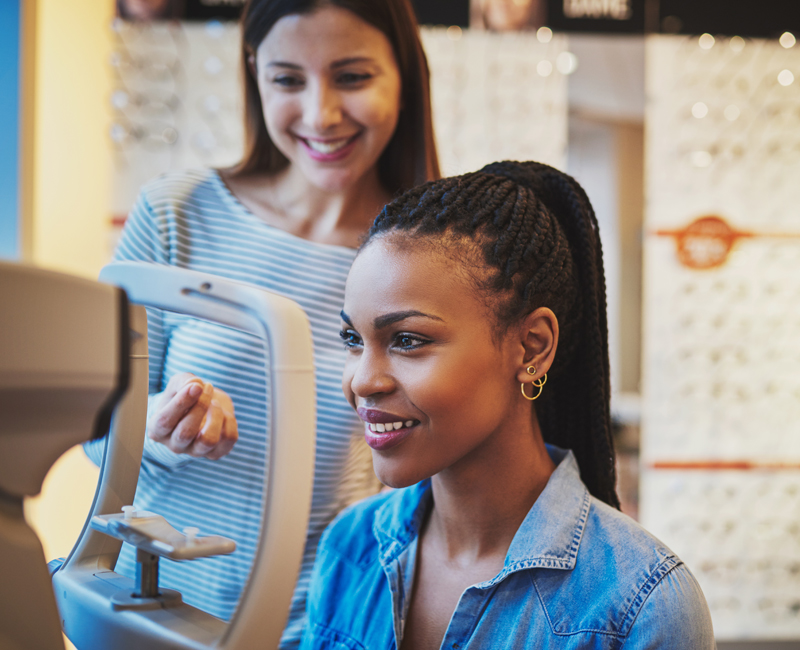Diabetic Eye Exam in Lake Worth
- Home
- Diabetic Eye Exam

Diabetic Eye Exam in Lake Worth
Diabetes has the potential to harm your eyes. It may damage the tiny blood capillaries in your retina located on the back wall of your eye. Left untreated, this damage can eventually cause a disease called Diabetic Retinopathy. Other problems such as Glaucoma and other eye conditions are also made more likely by diabetes. Because you may not realize the damage is occurring, it’s important to see an eye doctor regularly.
The ADA recommends that diabetics have an annual eye exam. During your annual diabetic wellness exam, we will conduct various tests to see if your vision or eye condition has changed as a result of diabetes.
Dr. Baker will conduct a thorough eye exam as part of a diabetic eye exam to look for indicators of diabetic retinopathy. People with type 1 or type 2 diabetes may be affected by this disease, which has the potential to lead to severe complications like blindness or vision loss. Fortunately, a diabetic retinal eye exam is typically a quick, painless process that can assist you in avoiding diabetic retinopathy or in spotting early warning signs of the disease.
What Does A Diabetic Eye Exam Entail?
Snellen Chart Eye Exam
The doctor will use a letter chart in various sizes to test your eyesight. The Snellen formula is what’s used here.
Eye Exam Using a Microscope
After that, eye drops will be administered to you in order to enlarge (dilate) your pupils so the doctor can see more of the rear of your eye. When the drops are applied, you might experience minor stinging in your eyes or a metallic taste in your mouth. Dr. Baker will use a special magnifying lens and a bright light to view the back of your eye. The practitioner can then see potential diabetic damage in these areas:
- Blood vessels in the front or middle parts of the eye
- The back of the eye
- The optic nerve
Your eyesight might be blurry for up to 6 hours after your exam, but it’s usually less time than that. It will be more difficult to concentrate on nearby objects. You should plan to have someone else take you home.
Also, dilated pupils make it easier for sunshine to harm your eyes. Until the drops’ effects fade off, cover your eyes with dark glasses or other eye protection. Bringing sunshades to wear home is a good idea.
Slit Lamp
To view the transparent surface of the eye called the cornea, another tool called a slit lamp may be utilized.
Digital Eye Scan/Imaging
To perform a more thorough examination, the doctor might capture pictures of the back of your eye. This does not require dilation of the eyes, but instead, photographs of your retina are taken with a specialized camera. If additional tests or treatment are necessary, the doctor will let you know after looking at the pictures.
The Best Diabetic Eye Care Available
If you work to manage Diabetes in your body and get regular eye exams, there is nothing to fear. Dr. Baker is experienced in caring for patients who have diabetes and provides the best eye care in the South Florida region. The actual eye examination typically lasts 30 minutes. You should receive results right away if you plan the examination with an eye care professional at Bright Side Eyecare.


